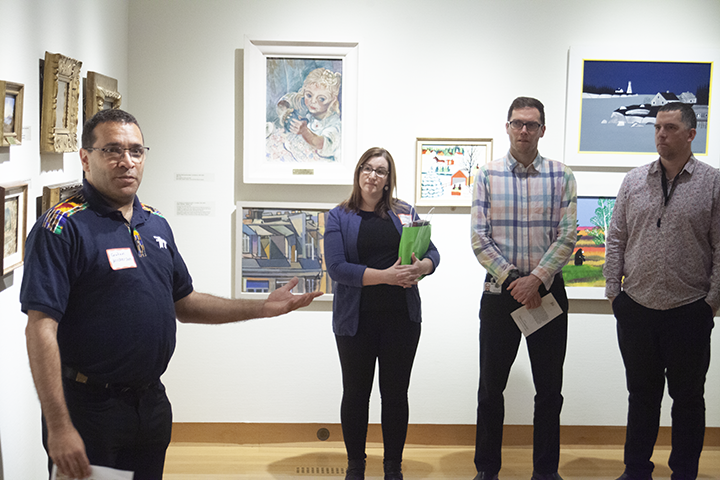
History is complicated and complex, which is why Anglophone West School district teachers and staff are taking advantage of professional learning opportunities that bring to light stories that may have been omitted or sidelined by the cultural biases of an earlier time period.
To learn more accurate, inclusive historical narratives and uncover the region’s hidden histories, the school district participated in an event at the Beaverbrook Art Gallery last Thursday, February 9, to promote a new geocache tour as a teaching tool.
Teachers, principals, vice-principals, and subject coordinators came to learn about a historical geocaching tour designed by Black Loyalist Historian Graham Nickerson. The tour provides a unique, immersive way to learn history.
“When you can see the network of relationships, things are much easier to understand,” said Nickerson. “Geocaching puts people inside history.”
Geocaching—described by National Geographic as “a type of global treasure hunt of people looking for caches, or hidden stashes of objects”—is used to discover the hidden and long-forgotten histories of Black Frederictonians. Nickerson’s geocache shows local Black sites of historical significance, like the Agnew Farmstead—a property once owned by pro-slavery Loyalist Stair Agnew—and the Fredericton neighbourhood where Black hockey legend Willie O’Ree grew up. His ever-expanding historical geocaches can be found on both geocaching.com and historicplacesdays.ca.
The event focused on the Black-history geocaches within the Beaverbrook Art Gallery itself. Nickerson and gallery Manager of Collections John Leroux took teachers and administrators on a tour, explaining the significance of various art pieces in the context of local Black history.

“There are many stories we need to bring to light now,” said Beth Christie, district subject coordinator for Social Studies, Fine Arts, and Enrichment. “As educators, we are storytellers.”
But Christie is adamant that as educators, this geocache tour provides an engaging opportunity to learn histories that may not have been part of their education.
“Geocaching is a fun activity, but we don’t want the activity to make history superficial,” she said. “I hope that participating teachers now know this history is right here, and we need to learn these stories so we can make our courses meaningful to all the students in the classroom.”

